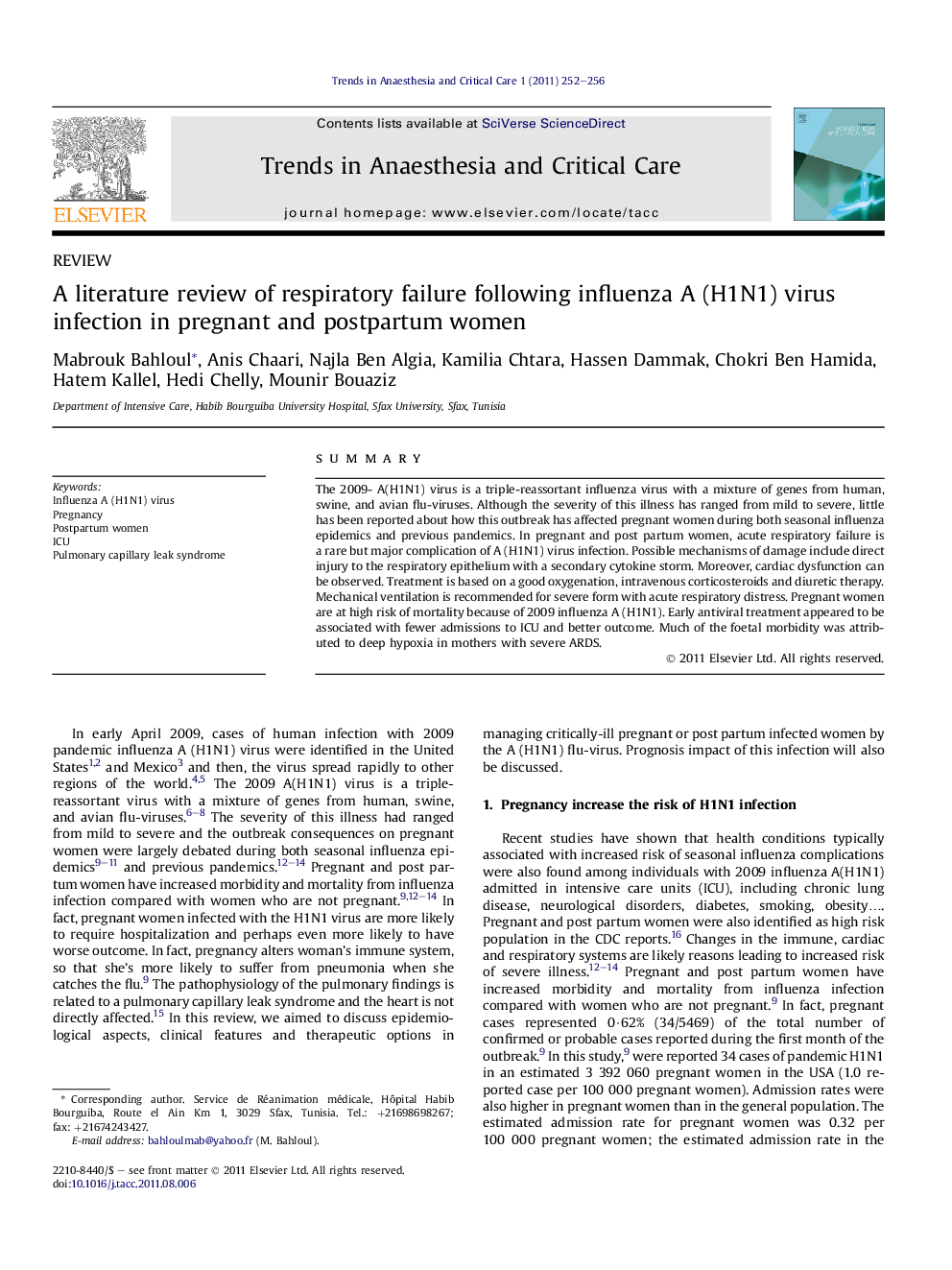| Article ID | Journal | Published Year | Pages | File Type |
|---|---|---|---|---|
| 2772828 | Trends in Anaesthesia and Critical Care | 2011 | 5 Pages |
SummaryThe 2009- A(H1N1) virus is a triple-reassortant influenza virus with a mixture of genes from human, swine, and avian flu-viruses. Although the severity of this illness has ranged from mild to severe, little has been reported about how this outbreak has affected pregnant women during both seasonal influenza epidemics and previous pandemics. In pregnant and post partum women, acute respiratory failure is a rare but major complication of A (H1N1) virus infection. Possible mechanisms of damage include direct injury to the respiratory epithelium with a secondary cytokine storm. Moreover, cardiac dysfunction can be observed. Treatment is based on a good oxygenation, intravenous corticosteroids and diuretic therapy. Mechanical ventilation is recommended for severe form with acute respiratory distress. Pregnant women are at high risk of mortality because of 2009 influenza A (H1N1). Early antiviral treatment appeared to be associated with fewer admissions to ICU and better outcome. Much of the foetal morbidity was attributed to deep hypoxia in mothers with severe ARDS.
